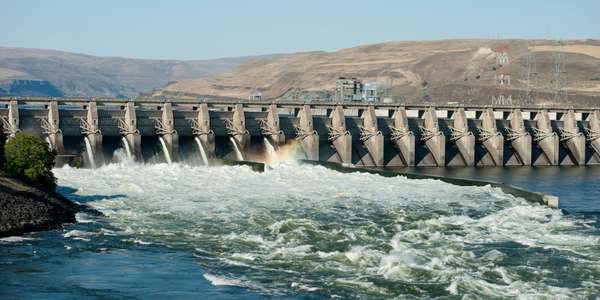Amazon helped an American energy company

- Infrastructure as a Service (IaaS) - Cloud Databases
- Infrastructure as a Service (IaaS) - Virtual Private Cloud
- Renewable Energy
- Remote Collaboration
Based on a program need to build a collaborative data repository for the Marine Hydrokinetic Program, NREL wanted to build a secure, yet collaborative, platform to collect, curate, store, and share moderately sensitive data, which focuses on water power research. As part of this effort, NREL built an environment with a Moderate Authority to Operate (ATO) accreditation from the Federal Information Security Management Act (FISMA). With a FISMA Moderate ATO, NREL maintains all mandated cyber security requirements, while gaining the ability to manage and share moderately sensitive data with other government agencies and research entities.
As it prepared to design the new infrastructure, NREL knew it needed agility and flexibility. “Our goal was to make it easy for analysts and scientists to access and publish data, but we didn’t want to spend our time managing infrastructure to facilitate that. We want to focus on the product—the data itself,” says Webber. For example, NREL uses a dev-ops team approach focused on the needs of the client and ensures that the research metadata is optimized for accessibility. “We need to make sure the right descriptors and keywords are there so we can easily connect our users to all the other research sites,” says Jon Weers, senior web strategist at NREL. “If the data isn’t discoverable, it’s not useful to researchers.”
NREL uses Amazon Virtual Private Cloud (Amazon VPC) to build secure private networks within the environment. For data storage, the organization uses Amazon Simple Storage Service (Amazon S3) buckets to store multiple terabytes of research data, and Amazon Elastic Block Storage (Amazon EBS) to provide block storage for the MHKDR, OpenEI, and geothermal energy databases.
To build the cloud environment, the Cloud Team in NREL’s Strategic Energy Analysis Center worked with the Office of the CIO to meet more than 400 ATO-related controls, documenting the controls and validating the overall system security. Open data and all metadata associated with the data sets are shared through an interface that shows the types of data being submitted, descriptions of the data, and time frames for release to the public. Close to 6,000 people are expected to visit the new MHKDR site each month. Metadata from the MHKDR is shared with open data partners, allowing the data on MHKDR to be discoverable on sites like science.gov, in the Thompson Reuters data citation index, and on Data.gov. Users can access MHKDR data from any of these high-profile sites, increasing the number of downloads from the MHKDR by orders of magnitude.
Related Case Studies.










---nasdaq--amzn_14.jpg)
